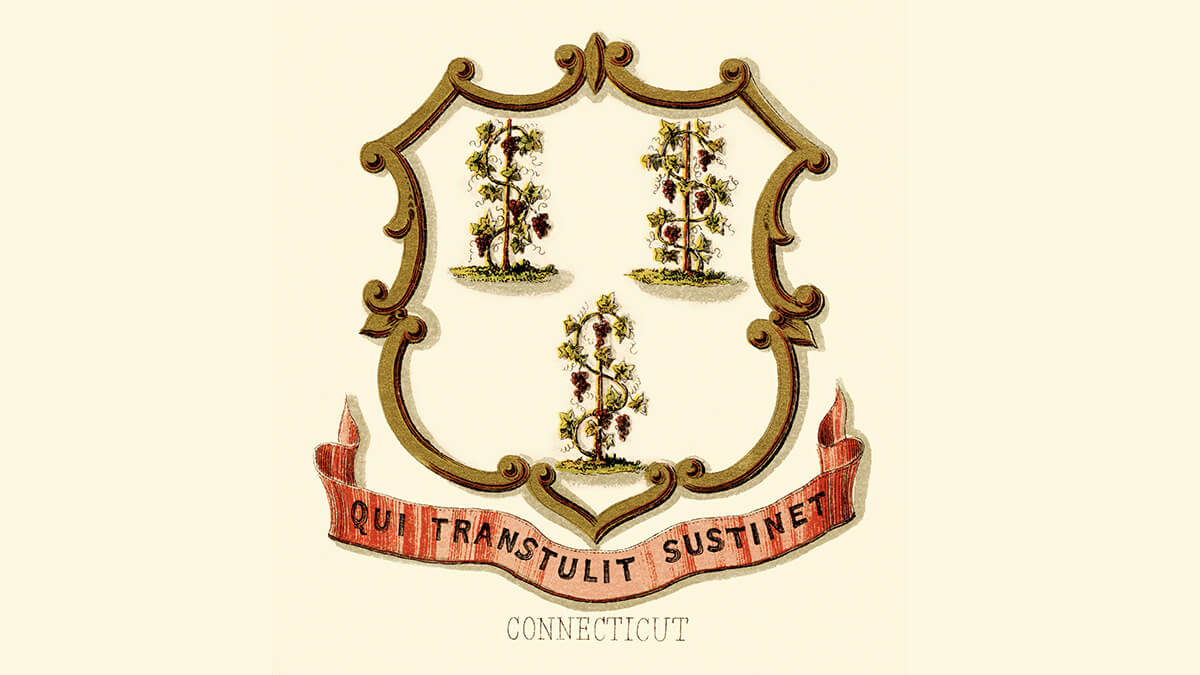Composition
The Connecticut flag features a field of azure charged with the state coat of arms, centered.

More than 100 years after statehood, Governor O. William Coffin established a committee to standardize a state flag.
An unofficial design had been used prior, inspired by a memorial by the Anna Warner Bailey Chapter of the Daughters of the American Revolution and featuring the Connecticut coat of arms.
The flag was officially adopted September 9, 1897.
The Connecticut flag features a field of azure charged with the state coat of arms, centered.

transplantation, settlement
three settlements of Windsor, Wethersfield, and Hartford
local flora
“He Who Transplanted Still Sustains”
While featured on the flag long before, the state coat of arms wasn’t officially adopted until 1931. It was based on the seal for Saybrook Colony, which featured 15 grapevines and the motto “Sustinet qui transtulit.”

Connecticut statute mentions the colors of its flag, including “neutral colors” for the grapevines, but it does not provide specific color values.
In a 1956 agreement, the Office of the Secretary of State and the State Purchasing Division developed a uniform color standard for the manufacture of Connecticut state flags, as specified here.
Connecticut statute specifies the dimensions of the flag in feet and inches. It should have a hoist of 4 feet, 4 inches and a fly of 5 feet, 6 inches.
This is a proportion of 26:33, but the flag is often produced with more common proportions of 2:3 and 3:5.
It does not specify the dimensions for the coat of arms.
